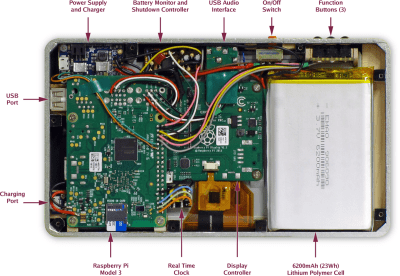Hey, you know what’s happening right now? We’re wrapping up the third round of The Hackaday Prize. This challenge, Wheels, Wings, and Walkers, is dedicated to things that move. If it’s a robot, it qualifies, if it’s a plane, it qualifies, if it passes butter, it qualifies. There’s only a short time for you to get your entry in. Do it now. Superliminal advertising.
Speaking of the Hackaday Prize, this project would be a front-runner if only [Peter] would enter it in the competition. It’s one thing to have a cult; I have a cult and a petition to ‘stop’ me.
We were completely unaware of this project, but a few weeks ago, a cubesat was launched from Baikonur. This cubesat contains a gigantic mylar reflector, and once it’s deployed it will be the second brightest object in the night sky after the moon. I don’t know why we haven’t seen this in the press, but if you have any pictures of sightings, drop those in the comments.
In a mere two years, we’ll be looking at the 50th anniversary of the Apollo 11 landing. The mission control center at Johnson Space Center — where these landings were commanded and controlled — is still around, and it’s not in the best shape. There’s a Kickstarter to restore the Apollo Mission Control Center to its former glory. For the consoles, this means restoring them to Apollo 15 operational configuration.
We’ve seen 3D printed remote control airplanes, and at this point, there’s nothing really exceptional about printing a wing. This user on imgur is going a different direction with 3D printed fiberglass molds. Basically, it’s a fuselage for a Mustang that is printed, glued together, with the inside sanded and coated in wax. Two layers (3 oz and 6 oz) fiberglass is laid down with West Systems epoxy. After a few days, the mold is cracked open and a fuselage appears. This looks great, and further refinements of the process can include vapor smoothing of the inside of the mold, a few tabs to make sure the mold halves don’t break when the part is released, and larger parts in general.
The Darknet’s Casefile will take you to the limit of your existing knowledge. Join them, to go on a quest to improve your technical abilities.
This week is Def Con. That means two things. First, we’re on a hardware hunt. If you’ve been dedicating the last few months to #badgelife or other artisanal electronics, we want to hear about it. Second, [Joe Kim] made a graphic of the Tindie dog wearing a Hackaday hoodie and it’s adorable. There are a limited number of stickers of our hacker dog.
Gigabyte launched a single board computer with an Intel Apollo Lake CPU, discrete memory and storage, and a mini PCIe slot. Of course, this is being incorrectly marketed as a ‘Raspberry Pi competitor’, but whatever.























